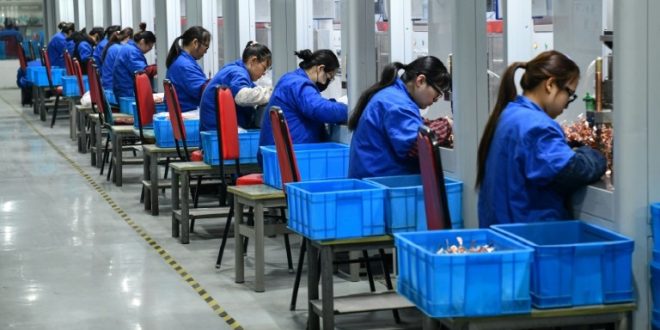18-01-2024
BEIJING: China’s economy last year grew at one of its slowest rates in more than three decades, official figures showed Wednesday, as it was battered by a crippling property crisis, sluggish consumption and global turmoil.
 The figures were in line with expectations and even beat Beijing’s target but will likely pile fresh pressure on officials to unveil more stimulus measures to kickstart business activity and get the country’s army of consumers spending again.
The figures were in line with expectations and even beat Beijing’s target but will likely pile fresh pressure on officials to unveil more stimulus measures to kickstart business activity and get the country’s army of consumers spending again.
China’s National Bureau of Statistics revealed that gross domestic product expanded 5.2 percent to hit 126 trillion yuan ($17.6 trillion) last year.
Markets in Asia fell on the news, with Hong Kong’s exchange closing down 3.7 percent and Shanghai off more than two percent.
The reading is better than the three percent recorded in 2022, when strict zero-COVID curbs destroyed activity, but marks the weakest performance since 1990, excluding the pandemic years.
After lifting its draconian COVID measures at the end of 2022, Beijing set itself a growth target of “around five percent” for last year.
The economy enjoyed an initial post-pandemic rebound, but ran out of steam within months as a lack of confidence among households and businesses hit consumption.
“With investment in the property sector falling, the economy is more dependent on the manufacturing sector and service sector,” Zhiwei Zhang, President and Chief Economist at Pinpoint Asset Management, said in a note.
 Snd Teeuwe Mevissen, China economist at Rabobank, told media; “the main challenges for China continued to be the malfunctioning real estate sector and related to its low levels of private consumption.”
Snd Teeuwe Mevissen, China economist at Rabobank, told media; “the main challenges for China continued to be the malfunctioning real estate sector and related to its low levels of private consumption.”
Statistics last month showed deflation continued for the third month in a row, likely deepening consumer reluctance to spend.
And exports, historically a key growth driver, fell last year for the first time since 2016, reflecting how tensions with the United States and a stuttering global economic recovery are compounding Beijing’s struggles to kickstart growth at home.
China’s GDP figures remain a key source of insight into the health of the world’s second-largest economy, despite being eminently political.
Officials are due to release their growth target for 2024 in March.
Between the third and fourth quarters figures more reflective of the real-time economic situation it only grew one percent and December saw retail sales, a key indicator of household spending slow after a rebound the previous month.
Unemployment also increased slightly to 5.1 percent though the statistics effectively exclude millions of migrant workers from rural areas. (Int’l Monitoring Desk)
 Pressmediaofindia
Pressmediaofindia




